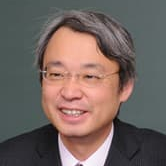Water and Wastewater Treatment Technologies with Membrane Filtration
A special issue of Membranes (ISSN 2077-0375). This special issue belongs to the section "Membrane Processing and Engineering".
Deadline for manuscript submissions: closed (30 November 2022) | Viewed by 34295
Special Issue Editors
Interests: water and wastewater treatment using membranes; hybrid membrane processes; natural organic matter removal by membrane filtration; membrane fouling and integrity testing; removal of emerging contaminants by membrane filtration
Special Issues, Collections and Topics in MDPI journals
Interests: environmental phenomena occurring at the solid/water interface and the engineering applications involving these phenomena; with special focus on water and wastewater separation using membranes; desalination; membrane fouling mechanisms; the coupling of membrane processes with advanced oxidation
Special Issues, Collections and Topics in MDPI journals
Interests: membrane-based treatment; water reuse; microplastics; micropollutant removal; disinfection byproducts
Special Issues, Collections and Topics in MDPI journals
Interests: water pollution control; membrane filtration; membrane fouling control
Special Issues, Collections and Topics in MDPI journals
Interests: water supply; water treatment technologies; membrane filtration processes; safe drinking water in developing countries
Special Issues, Collections and Topics in MDPI journals
Special Issue Information
Dear Colleagues,
Membrane filtration processes have become a main option for water and wastewater treatment due to their compactness and highly efficiency. In addition, the reliability of membrane filtration processes has improved extensively thanks to the development of new membrane materials and the long-term experience of operation. While the benefits and opportunities for sustainable membrane operation are constantly opening up, there are concurrent challenges that require significant research efforts. Membrane fouling remains the major obstacle to the stable operation of the membrane filtration processes. Although there are several membrane integrity testing methods at hand, the usefulness of those testing methods has rarely been reported. Innovation in membrane materials, such as membrane grafting and modification, is progressing, but further development is anticipated for the practical application of those innovative membrane designs. The removal of emerging and trace contaminants by membrane filtration is still a challenge due to associated costs and limited removal efficiency; thus, hybrid processes could be practical solutions for such applications. Small-scale and point-of-use membrane filtration processes, including household water treatment, would increase options for the removal of arsenic and fluoride: studies on technology advances, as well as case studies, of such compact membrane processes are highly useful for the safe and reliable implementation of these methods.
This Special Issue is devoted to “Water and Wastewater Treatment Technologies with Membrane Filtration”. Authors are invited to submit their contributions in the form of research articles (based on either full-scale operation, lab-scale or pilot-scale experiments, or simulation results), technical reporting, case studies, and critical reviews. Relevant topics include:
- Membrane filtration application to water and wastewater treatment in full-scale or pilot-scale.
- Innovative membrane materials and designs, including membrane grafting and modification for improvement of filtration flux and contaminant removal.
- Hybrid membrane processes, such as adsorption-membrane filtration processes.
- Removal of natural organic matter, emerging and trace contaminants, and dissolved contaminants by membrane filtration.
- Analysis of membrane fouling and integrity testing of membranes.
- Process design and life-cycle cost analysis of membrane filtration processes.
- Desalination and zero liquid discharge driven by membranes.
- Low carbon membrane technologies.
Prof. Dr. Satoshi Takizawa
Dr. Alberto Tiraferri
Dr. Jenyuk Lohwacharin
Dr. Yu Yang
Dr. Takashi Hashimoto
Guest Editors
Manuscript Submission Information
Manuscripts should be submitted online at www.mdpi.com by registering and logging in to this website. Once you are registered, click here to go to the submission form. Manuscripts can be submitted until the deadline. All submissions that pass pre-check are peer-reviewed. Accepted papers will be published continuously in the journal (as soon as accepted) and will be listed together on the special issue website. Research articles, review articles as well as short communications are invited. For planned papers, a title and short abstract (about 250 words) can be sent to the Editorial Office for assessment.
Submitted manuscripts should not have been published previously, nor be under consideration for publication elsewhere (except conference proceedings papers). All manuscripts are thoroughly refereed through a single-blind peer-review process. A guide for authors and other relevant information for submission of manuscripts is available on the Instructions for Authors page. Membranes is an international peer-reviewed open access monthly journal published by MDPI.
Please visit the Instructions for Authors page before submitting a manuscript. The Article Processing Charge (APC) for publication in this open access journal is 2200 CHF (Swiss Francs). Submitted papers should be well formatted and use good English. Authors may use MDPI's English editing service prior to publication or during author revisions.
Keywords
- Innovative membrane filtration process
- Membrane integrity
- Membrane fouling and cleaning
- Membrane grafting and modification
- Membrane modification
- Household water treatment
- Desalination
- Emerging and trace contaminant removal
- Hybrid membrane processes
- Removal of natural organic matter
- Life cycle cost analysis (LCA) of membrane filtration processes
Benefits of Publishing in a Special Issue
- Ease of navigation: Grouping papers by topic helps scholars navigate broad scope journals more efficiently.
- Greater discoverability: Special Issues support the reach and impact of scientific research. Articles in Special Issues are more discoverable and cited more frequently.
- Expansion of research network: Special Issues facilitate connections among authors, fostering scientific collaborations.
- External promotion: Articles in Special Issues are often promoted through the journal's social media, increasing their visibility.
- Reprint: MDPI Books provides the opportunity to republish successful Special Issues in book format, both online and in print.
Further information on MDPI's Special Issue policies can be found here.










